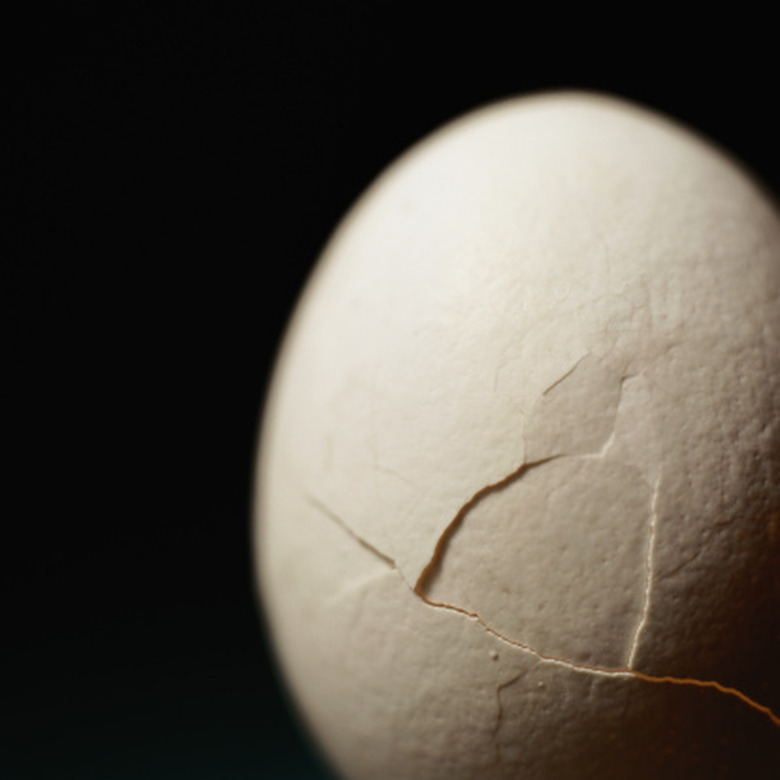How To Make A Egg Shell Dissolve For A Science Fair Project
Dissolving egg shell experiments don't just provide fun at-home science projects, they also allow students to learn about chemistry, physics and ecology. For example, in environmental science, students might learn about the effects of acid rain on buildings or public landmarks. The calcium carbonate in egg shells is the same as the calcium carbonate in some statues. When vinegar reacts with egg shells, it mimics the actions of acid rain on these statues.
Step 1
Pour a cup of vinegar into a large plastic container.
Step 2
Place at least two eggs inside the vinegar. Try to keep the eggs from touching each other. At this point, you may notice that bubbles start to form around the egg shells. When the calcium carbonate in the egg shells reacts with the acetic acid in the vinegar, carbon dioxide releases in the form of a gas, in addition to water and a calcium ion.
Step 3
Add more vinegar, if needed, to completely cover the eggs. Cover the container with plastic wrap.
Step 4
Pull the eggs out of the vinegar, after 24 hours, using your spoon. Be careful not to crack the eggs. Empty the container and fill it again with fresh vinegar. Place the eggs in the fresh vinegar.
Step 5
Pull the eggs out of the vinegar, after 24 hours, using your spoon. At this point, the outer shell of the eggs should have completely dissolved, leaving only a thin membrane holding the eggs together.
Step 6
Create a report or presentation about why the egg shells dissolved in the vinegar, if your experiment calls for a report or presentation.
Things Needed
- Vinegar
- Plastic container
- Eggs
- Spoon
TL;DR (Too Long; Didn't Read)
You can perform additional experiments on the naked eggs, such as experiments on selective permeability.
Cite This Article
MLA
Quinn, Donny. "How To Make A Egg Shell Dissolve For A Science Fair Project" sciencing.com, https://www.sciencing.com/make-dissolve-science-fair-project-5578841/. 24 April 2017.
APA
Quinn, Donny. (2017, April 24). How To Make A Egg Shell Dissolve For A Science Fair Project. sciencing.com. Retrieved from https://www.sciencing.com/make-dissolve-science-fair-project-5578841/
Chicago
Quinn, Donny. How To Make A Egg Shell Dissolve For A Science Fair Project last modified August 30, 2022. https://www.sciencing.com/make-dissolve-science-fair-project-5578841/
